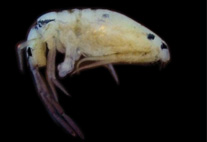Abstract
Twenty-seven species of hydroids were collected from the peaks (35–42 meters depth) of the Gorringe Bank (NE Atlantic) during the oceanographic campaign ‘LusoExpedição Olympus 2008’. Twenty-one of these species are new for the Gorringe Bank that now has published records for a total of 37 hydroid species. Lafoeina tenuis, Sertularella ellisii and Clytia hemisphaerica were the most abundant hydroid species collected. Results revealed spatial differences in the composition of species assemblages along the summits of the Gorringe, as only 14 of the species sampled were found both in the Ormonde and Gettysburg seamounts. The large density of algae at the peaks of the seamounts sustain a considerable hydrozoan diversity (23 species), but visibly inhibits the establishment of hydroids to the rocky substrates (only 2 species found). All the known hydrozoan species from the peaks of the Gorringe were exclusively collected during summer, thus sampling in other seasons may reveal further hydrozoan diversity due to seasonal patterns of growth of algae and hydroids. Nevertheless, the reasonably high levels of hydrozoan biodiversity demonstrated only from a small portion the summits of the Gorringe, corroborate its seamounts as ‘biodiversity hotspots’. In agreement with previous investigations with shallow-water molluscs and sponges, the shallow-water hydroid fauna of the Gorringe revealed greater biogeographical affinities with the Mediterranean and mainland Portugal. This is the first report of Eudendrium armatum outside of the Mediterranean.

